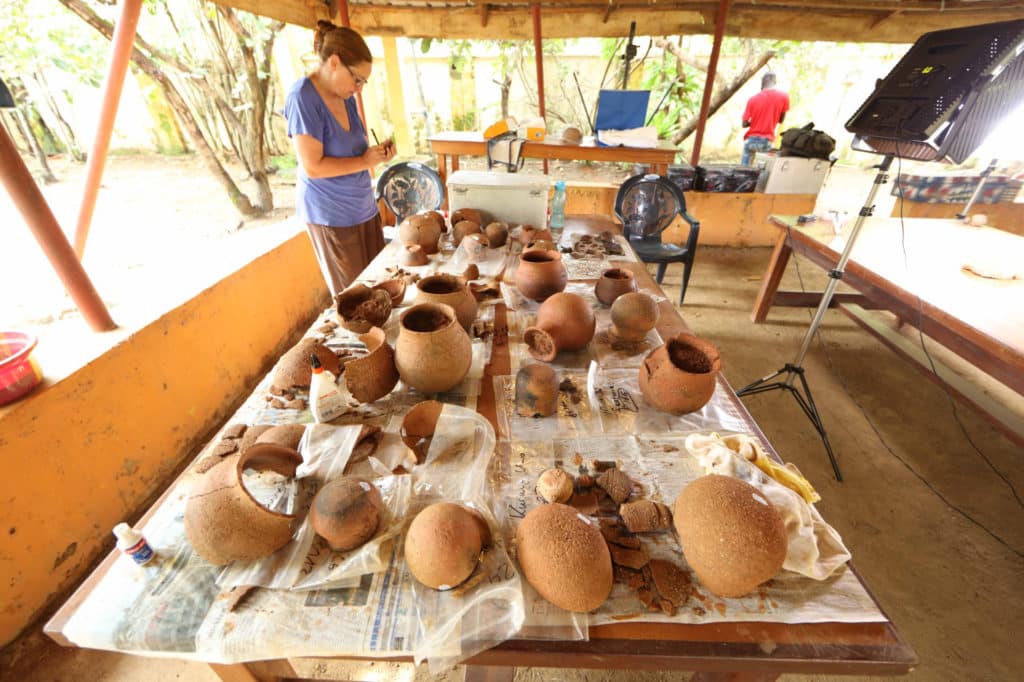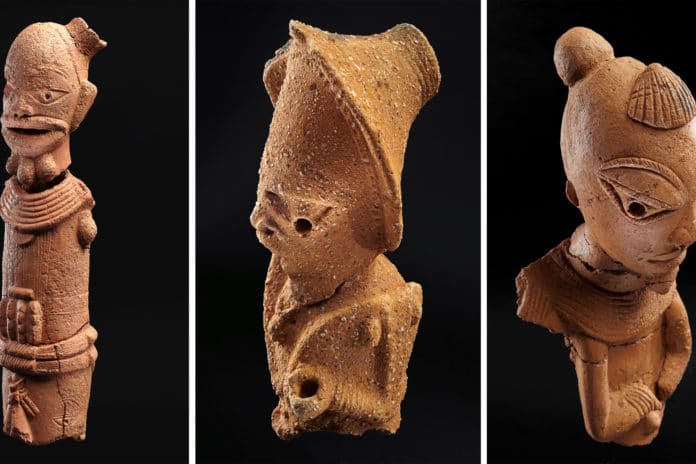Where available, honeybee hive products, including honey, beeswax, and brood. They have been of considerable importance to ancient communities, both as a nutritional source and for medicinal, cosmetic, and technological purposes.
Honey is essential insect-related food globally. It is a rare sweetener source, comprises 80–95% sugar (carbohydrate), several important vitamins and minerals, and components that act as preservatives.
It is not known how long humans have been exploiting bee products. As it is a rare source of sweetener for ancient people, there is very little surviving evidence for the honeybee‘s ancient human exploitation.
Scientists from the University of Bristol, with colleagues from Goethe University, Frankfurt, carried out a chemical analysis of more than 450 prehistoric potsherds from the Central Nigerian Nok culture. They wanted to determine the type of food ancient people used to cook in their pots.
The Nok people are known for their remarkable large-scale terracotta figurines and early iron production in West Africa, around the first millennium BC. Surprisingly, their analysis revealed that around one third of the pottery vessels used by the ancient Nok people were used to process or store beeswax.
Scientists identified the beeswax in pottery using a complex series of lipids, fats, oils, and the natural world’s waxes. The beeswax is probably present as a consequence of the processing (melting) of wax combs. The gentle heating of the pot leads to its absorption within the vessel walls.
Ancient people in Africa, such as the Efe foragers of the Ituri Forest, Eastern Zaire, who have historically relied on honey as their primary source of food, collecting all parts of the hive, including honey, pollen, and bee larvae, from tree hollows which can be up to 30 m from the ground, using smoke to distract the stinging bees.
Among the Okiek people of Kenya, who rely on the trapping and hunting of a wide variety of games, smoked meat is preserved with honey, being kept for up to three years. A number of the Nok pots contained chemical evidence for the presence of both beeswax and meat products.

Lead author, Dr. Julie Dunne from the University of Bristol’s School of Chemistry, said: “This is a remarkable example of how biomolecular information extracted from prehistoric pottery, combined with ethnographic data, has provided the first insights into ancient honey hunting in West Africa, 3,500 years ago.”
Professor Richard Evershed FRS, who heads up Bristol’s Organic Geochemistry Unit and is a co-author of the study, added: “The association of prehistoric people with the honey bee is a recurring theme across the ancient world; however, the discovery of the chemical components of beeswax in the pottery of the Nok people provides a unique window on this relationship when all other sources of evidence are lacking.”
Professor Peter Breunig from Goethe University, who is the archaeological director of the Nok project and co-author of the study, said: “We originally started the study of chemical residues in pottery sherds because of the lack of animal bones at Nok sites, hoping to find evidence for meat processing in the pots. That the Nok people exploited honey 3,500 years ago was completely unexpected and is unique in West African prehistory.”
Professor Katharina Neumann from Goethe University, Frankfurt, the archaeobotanical director of the Nok project and co-author of the study, added: “Plant and animal remain from archaeological sites usually reveal only a small part of what prehistoric people had been eating. Chemical residues of beeswax in potsherds opens up completely new perspectives for the history of resource exploitation and ancient diet.”
Journal Reference:
- Dunne, J., Höhn, A., Franke, G. et al. Honey-collecting in prehistoric West Africa from 3500 years ago. Nat Commun 12, 2227 (2021). DOI: 10.1038/s41467-021-22425-4
